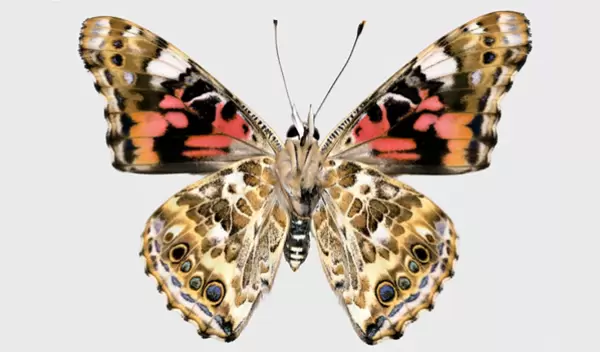
Butterfly wing patterns emerge from ancient DNA
Butterfly wing patterns have a basic plan, which is manipulated by noncoding regulatory DNA to create the diversity of wings seen in different species, according to new research.
The study, published in the journal Science, explains how DNA that sits between genes — called "junk" DNA or noncoding regulatory DNA — accommodates a basic plan conserved over tens to hundreds of millions of years while at the same time allowing wing patterns to evolve extremely quickly.
The research supports the idea that an ancient color pattern ground plan is already encoded in the genome, and that noncoding regulatory DNA works like switches to turn up some patterns and turn down others.
"We are interested to know how the same gene can build these very different-looking butterflies," said Anyi Mazo-Vargas of George Washington University, the study's first author. The senior author, Robert Reed, is at Cornell University.
"We see that there's a group of switches [noncoding DNA] that are working in different positions and are activated and driving the gene," Mazo-Vargas said.
Previous work in Reed's lab uncovered key color pattern genes: one (WntA) that controls stripes and another (Optix) that controls color and iridescence in butterfly wings. When the researchers disabled the Optix gene, the wings appeared black, and when the WntA gene was deleted, stripe patterns disappeared.
This study focused on the effect of noncoding DNA on the WntA gene, specifically, on 46 of these noncoding elements in five species of nymphalid butterflies, the largest family of butterflies.
For these noncoding regulatory elements to control genes, tightly wound coils of DNA become unspooled, a sign that a regulatory element is interacting with a gene to activate it, or in some cases, to turn it off.
The study was funded by the U.S. National Science Foundation.
"This research is a breakthrough for our understanding of the genetic control of complex traits, and not only in butterflies," said Theodore Morgan, a program director in NSF's Division of Integrative Organismal Systems. "Not only did the study show that the instructions for butterfly color patterns are deeply conserved across evolutionary history, but it also revealed new evidence for how regulatory DNA segments influence traits such as color and shape."
